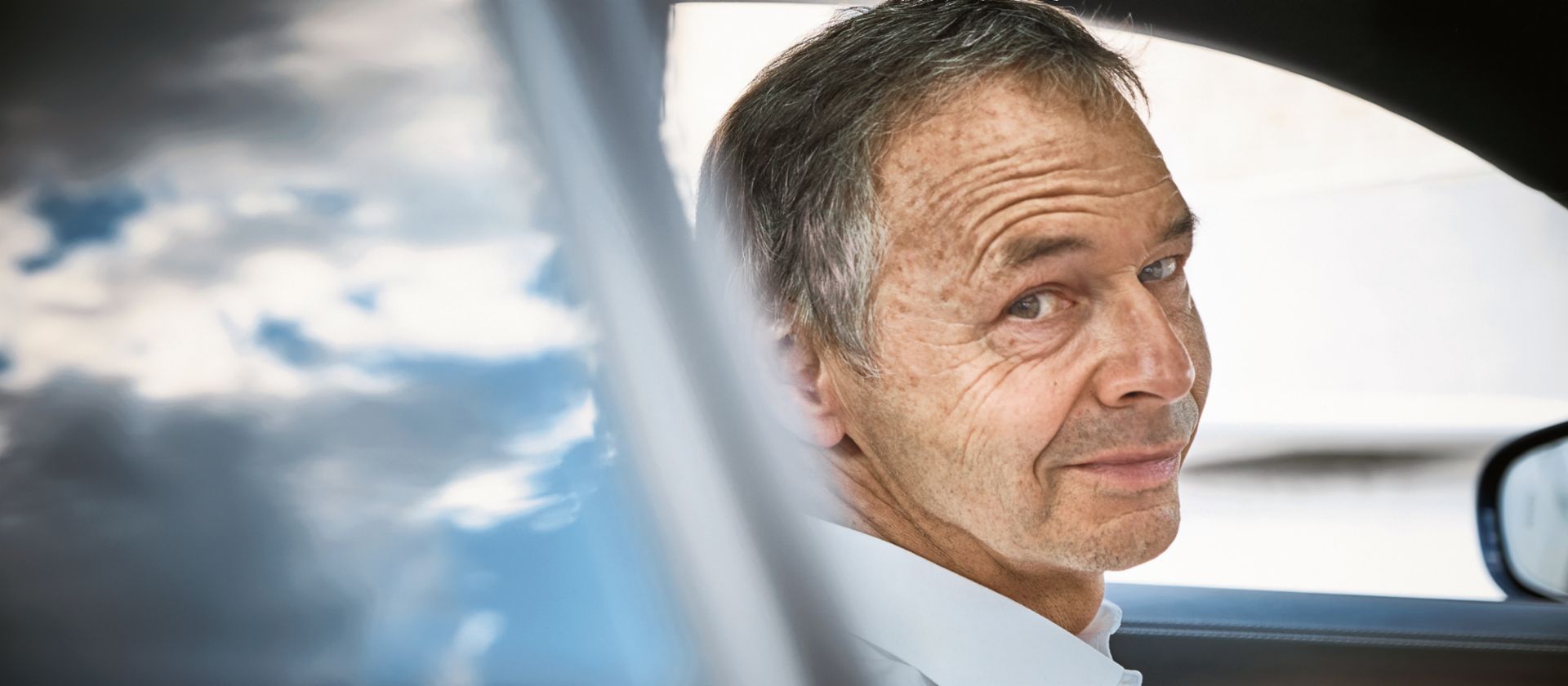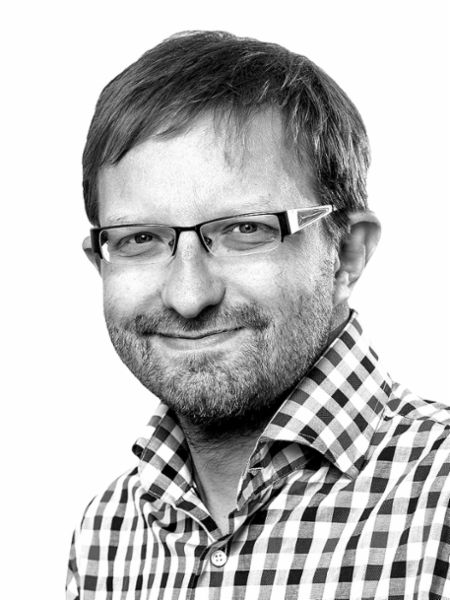Of Myths and Men
August Achleitner is the man behind the new Porsche 911, the finale and crowning achievement of his career. A portrait that becomes surprisingly personal on the drive from Zuffenhausen to Weissach.
km 000–035
1. Zuffenhausen
2. Weissach
-
Of Myths and Men
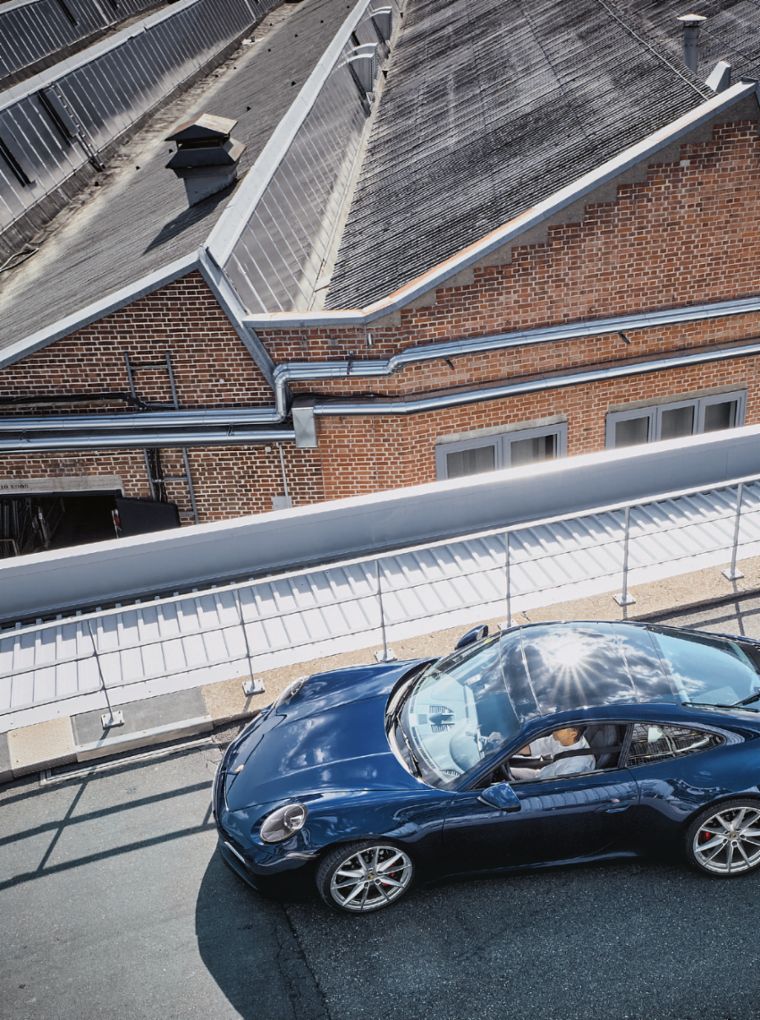
Setting off:
The drive begins at the headquarters in Zuffenhausen, where it all began.August Achleitner is at peace with himself and with what moves him. When he drives the thirty-five kilometers between Zuffenhausen and the Porsche Development Center in Weissach in the 911, all’s right with the world. Man and machine are in sync with each other, in perfect harmony. No other German sports car embodies such fervent emotion. Like no other car in the world, the 911 seems to effortlessly bring together the seemingly irreconcilable: purism and comfort, exclusivity and everyday utility, design and functionality. And there’s another unmistakable element: desire. After all, Achleitner isn’t just along for the ride. He’s in the thick of it.
The new 911 is his third one. “Head of the 718 and 911 model lines” is his job description, but it doesn’t do justice to the alluring nature of the task. “Keeper of the Grail,” they call him reverently: he’s the guardian of an icon and part of a large team, yet also something of a cult figure—in the harmony of the whole—who always knows where he’s coming from and where he’s going.
In the end, the decisive factor “is that the 911 generates a driving feeling that no other car can offer.” But how does it feel to be the person who’s responsible for a legend, who has a job that’s the envy of every kid, who’s unceasingly sculpting a statue for the ages? How does one manage, through it all, to avoid crashing on the rocks of one’s own creation, just as some composers and writers have done?
When Achleitner steers the 911 out onto the road, he does so without distractions. Music would only be a nuisance as he listens intently to other sounds: “To understand a car, you have to hear it,” he says. The clarity of purpose he brings to the road shapes his work in Weissach as well. “I’m too much the engineer.” He pauses for thought. “But I’m not so rational that I lack the capacity for enthusiasm.”
“To understand a car, you have to hear it.” August Achleitner
And with that he begins, like so many Porsche drivers, to speak of his first time. He’ll never forget how, in 1983, he got a Carrera for the weekend: a new 911 Cabriolet. Red. He was then living in Munich, and even now he can still recall every turn he took that day: Kesselberg, Kochelsee, the back way around to Garmisch-Partenkirchen. “It was such a fantastic experience.”
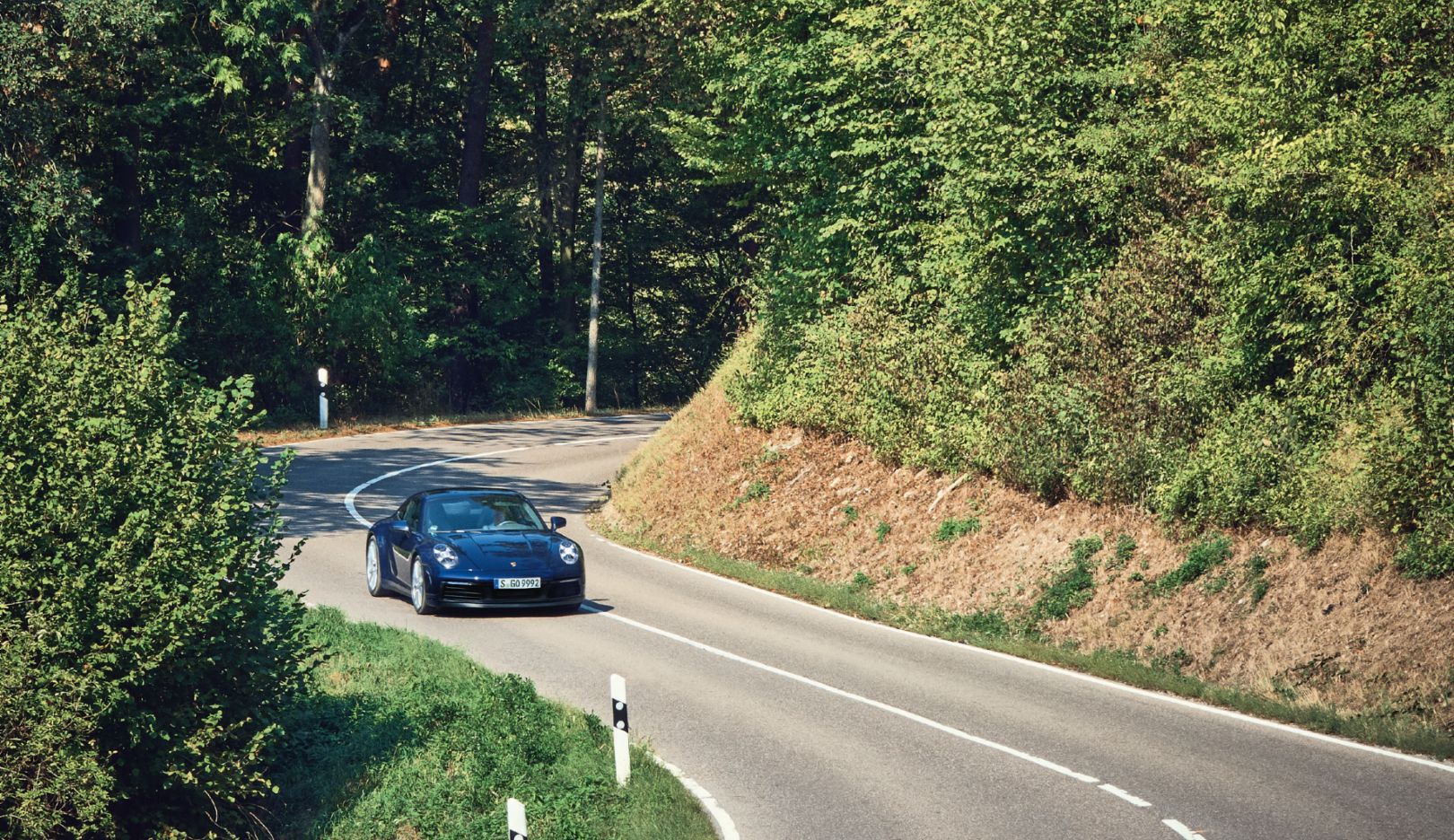
Meditative:
Onward toward Weissach along the western outskirts of Stuttgart, the green lung of the city.To understand the magic of that day, you’d have to imagine yourself in that specific time. Achleitner has been well acquainted with high-quality cars since childhood. His father, a department head at BMW and responsible for vehicle concepts, frequently came home with new models from his own company or other carmakers. These up-close experiences made quite an impression on the son, especially when it came to Porsche and the 911: “Of the three Porsche types at the time, it was actually the least technologically advanced.” In his eyes, it was a bit buttoned-down, almost a touch old-fashioned. A car for traditionalists, the old guard. Achleitner wanted to know, for instance, why the 911 lacked certain features that were already standard on other models. He intuited that an anti-lock brake system, for example, “didn’t meet the standards of the 911.” He was also fascinated by the “radiance” of the sports car, “its unique form and the concept. A rear engine was regarded as exotic at the time.” He took a job with Porsche in the chassis development department—and seized the opportunity to “make things better while retaining the concept. The 911, after all, is irreplaceable.” This mindset still holds today. That’s why the new Porsche 911 still has a central, entirely traditional analog tachometer, even with its full HD display in the Advanced Cockpit.
But back then, when Achleitner was learning the ropes at Porsche, the problems were significantly more basic: the new generation of the 911 needed to take corners more efficiently, based on completely new insights and methods of calculation. Achleitner and his colleagues got straight to work. The engineers in Weissach continually optimized the 911, from the G model to the 964 and the last air-cooled 911: “The 993, for example, was a big step compared to the generations that preceded it,” recalls Achleitner.
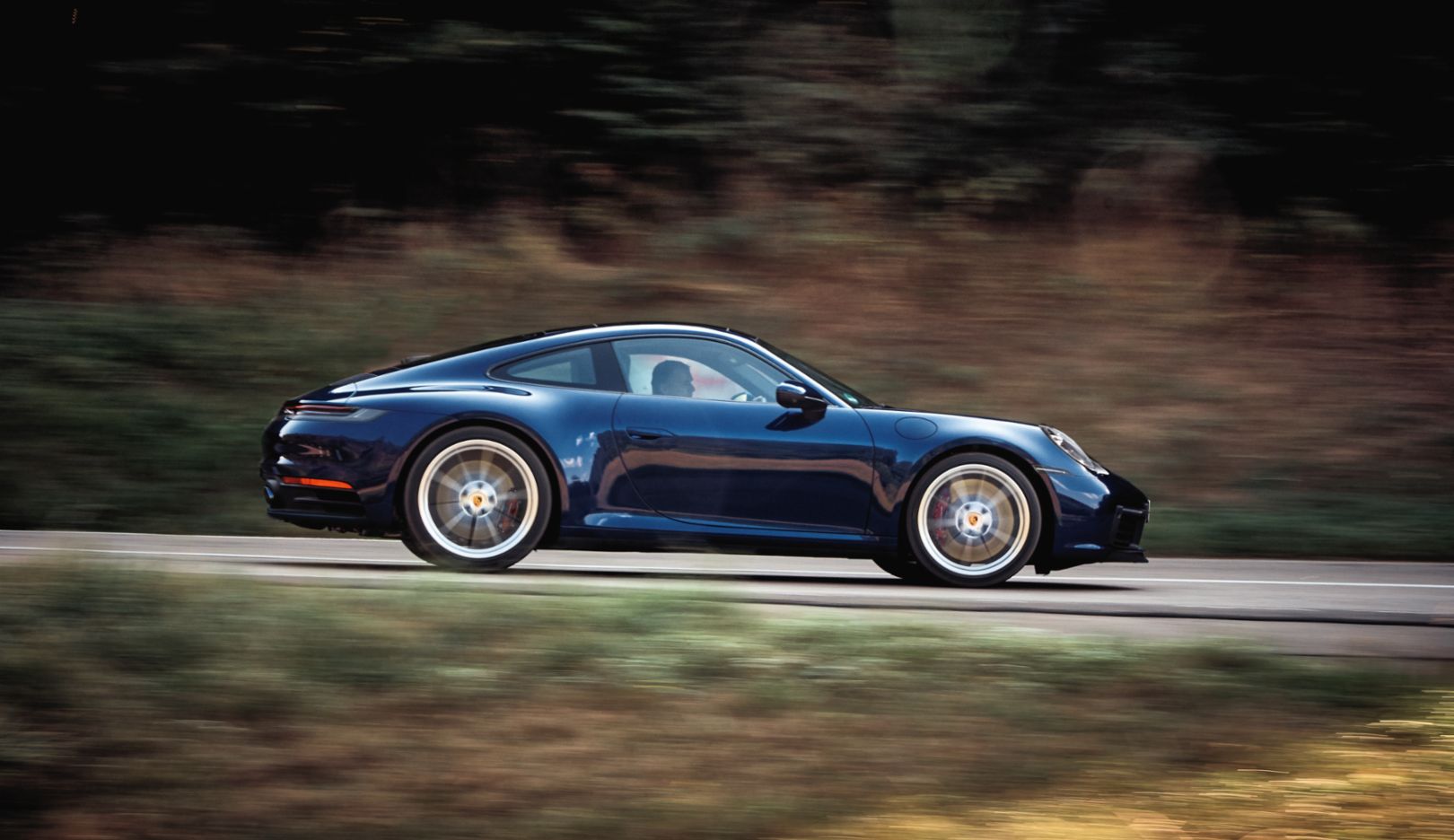
Yet the best was still to come. When Achleitner is asked today when the most exciting Porsche years were for him, he gives a surprising answer: 1991 and 1992. Porsche was in a state of crisis at that time. The mood was apocalyptic. “Then the team experienced a jolt,” he says.
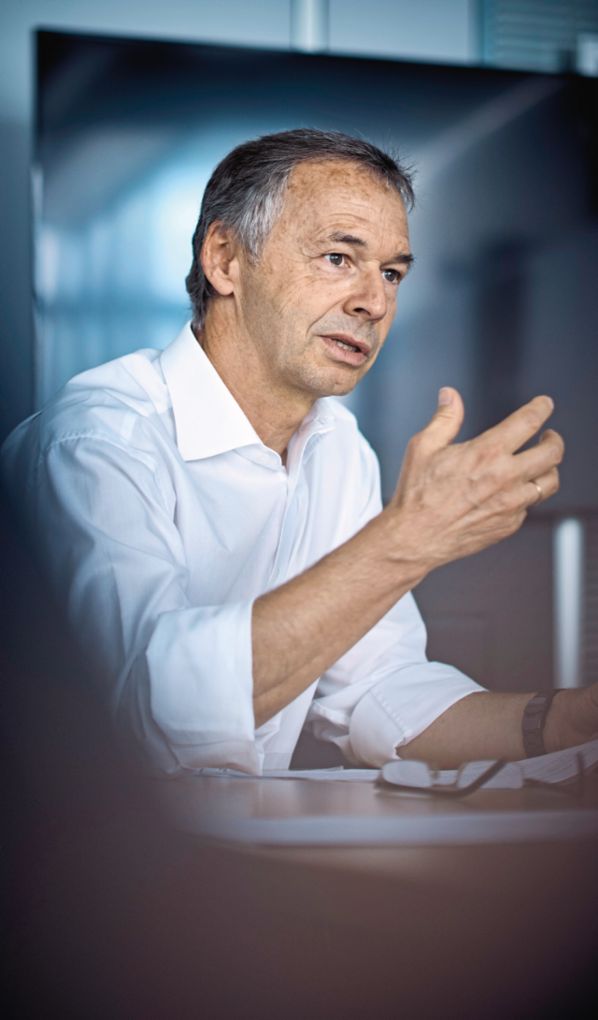
A change in the product policy was nigh. The Boxster—the starter Porsche, as it were—came, “finally.” The 911, Type 993, came. Salvation. With its successor, Type 996, Achleitner was already heading up the vehicle design process. He took over full responsibility for the model line in 2001, and two years ago the 718 was added.
Achleitner also increasingly worked outside of business hours: “We settled on the wheelbase of the 996 over coffee on a Sunday afternoon,” he says. “Eight centimeters more.” With the 997, the new 911 boss became familiar with the entire development cycle for the first time. “You’re working underground, in secrecy, confidentially, for more or less four years. And then you go to the public and you get feedback for almost half a decade’s worth of work in one fell swoop.” He feels “enormous tension” because “some decisions are made from the gut.” He’s all the more pleased, then, by delighted customers and good press.
Yet Achleitner remains both the driver and the driven. Engineers, after all, are always one evolutionary step ahead. And sometimes a gear ahead: the new 911 is the first to feature the Porsche double-clutch transmission (PDK) with eight gears, including the “quick shift” feature. A further addition to the driving pleasure. The eighth gear serves as a second overdrive, which saves gas. And “the gears are more harmoniously coordinated.” As much as Achleitner enjoys a relaxing drive over the mountain passes of Europe, the developer in him is never quite on vacation: “The engineer in me pops out of nowhere when the car doesn’t do what I want.” Then the crew in Weissach works at it until Achleitner says, “Now it’s the way it’s supposed to be.” That is, until he’s as thrilled as he recently was when he encountered heavy rain in Tyrol and activated the new Porsche Wet Mode. “The control systems react extremely sensitively. The difference is absolutely unmistakable. No one else has that.”
“The engineer in me pops out of nowhere when the car doesn’t do what I want.” August Achleitner
The rationalist is sensitive and abuzz with intuition. He “feels” his sports car, whether it’s on the north loop of the Nürburgring or his favorite route down to Tyrol. If being behind the wheel of the 911 means business, on a motorcycle passion reigns. And he’s convinced that riding a motorcycle makes you a better driver. “On a motorcycle you have to keep a much closer eye on your surroundings. You’re more attuned to possible hazards and have a better overall picture of the traffic situation, which makes you more aware of what the vehicle under you is doing and how it’s reacting.”
As a kid, Achleitner idolized five-time Grand Prix motorcycle champion Toni Mang—and, of course, Walter Röhrl, who was in “a dimension of his own.” He has long since become friends with his childhood idol. “I think he’s great, because he’s authentic and honest. Sometimes to the point of discomfort, but he says things the way he sees them. I think I’m not too different myself.”
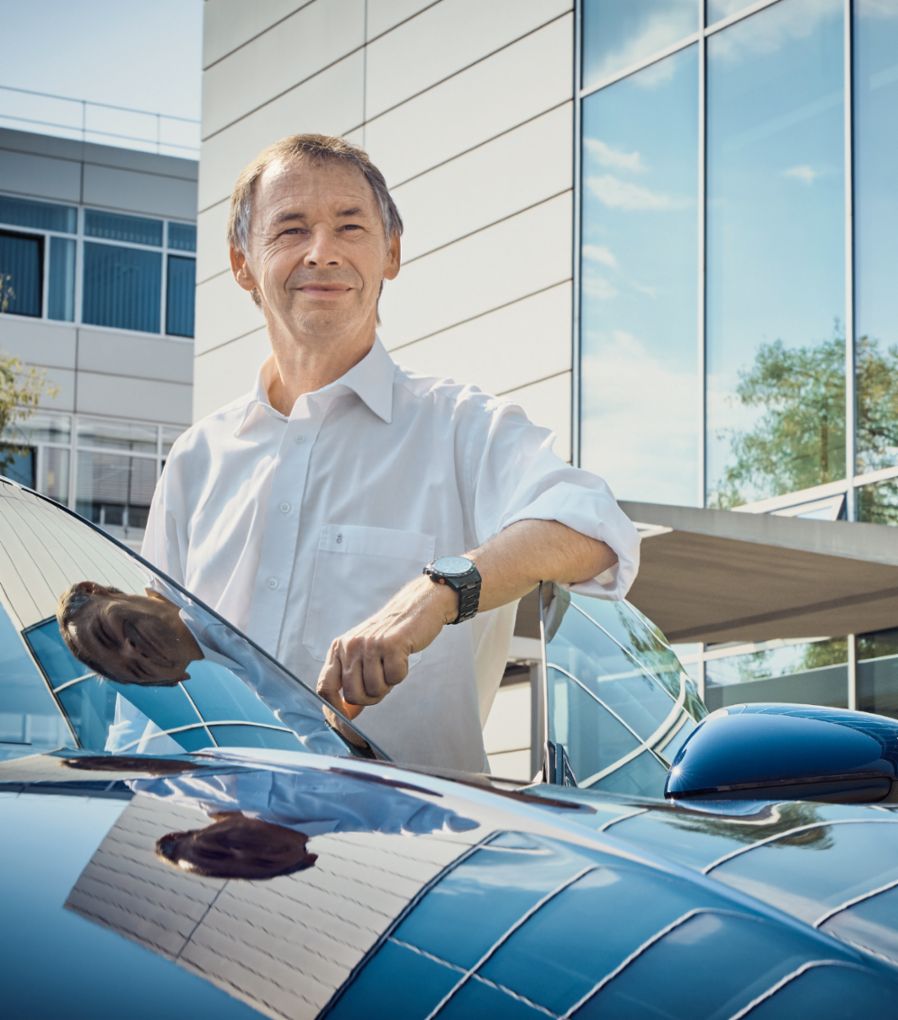
The journey is the destination:
Achleitner and the new 911 united in serene harmony.There are many traits that Achleitner and Röhrl have in common. “It goes well beyond the subject of cars. Walter is a passionate sportsman, mountain biker, skier, early riser, and someone who doesn’t hang around till two in the morning. I’m the same way. The next day’s too important to me.” Sometimes Achleitner sits reverently next to Röhrl in the passenger seat, deeply impressed by the calm attitude of the two-time rally world champion. The 911 boss remains serene behind the wheel as well.
Perhaps the two get along so famously in part because Röhrl and Achleitner not only think alike but also have similar steering styles—one of them in the car, the other in the company. Achleitner draws strength from within—a picture of unflappable poise. While others are rushing around frenetically, Achleitner finds tranquility within himself.
That’s the case even now, as the new 911 is first revealed to the public. It’s August Achleitner’s grand finale as head of the 718 and 911 model lines.
August Achleitner
Born on November 6, 1955, August Achleitner moved from Munich to Stuttgart with his family in 1983. Three and a half decades with Porsche followed—first in vehicle development and later as the head of Technical Product Planning, Vehicle Concepts, and Package. Achleitner took over as head of the 911 model line in 2001, and since 2016 has led the 718 model line as well.
Special features of the new 911
Porsche Wet Mode
Based on frequency changes in the tire noise, sensors in the front wheel arches determine the road condition. If they detect any moisture, the driver is alerted and prompted to activate Wet Mode. Stability (via Porsche Stability Management) and traction (via Porsche Traction Management) are adjusted, and the rear spoiler goes into the performance position upwards of 90 kmh to prevent hydroplaning on the rear axle.
Eight-speed PDK
The completely redeveloped eight-speed Porsche double-clutch transmission (PDK) makes shifting even more harmonious. Enhanced hydraulics enable quick shifting in manual and Sport Plus mode—features previously available only in a few GT models. The top speed is reached in sixth gear, as before. As a second overdrive, eighth gear provides an efficiency boost.
Porsche Advanced Cockpit
The analog tachometer is still in the middle. To the left and right of it, two seven-inch full HD displays spring to life when the engine ignites. They, along with the 10.9-inch Porsche Communication Management module (including navigation), can be operated via touchscreen and four touch-sensitive buttons—with acoustic and tactile feedback—on the central console.
